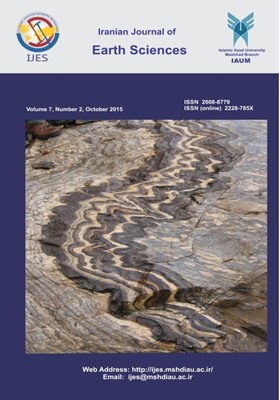Upper Cretaceous Petroleum System of Northwestern Persian Gulf
Subject Areas : MineralogyAli Amirkhani 1 , Marziyeh Mirzakhanian 2 , Susan Sepahvand 3 , Sadoni Sadoni 4
1 - National Iranian Oil Company (NIOC), Exploration Directorate, Tehran, Iran
2 - Expioration directorate of NIOC- First street- Seoul street- Sheikh bahaei square- Tehran- Iran
3 - Expioration directorate of NIOC- First street- Seoul street- Sheikh bahaei square- Tehran- Iran
4 - Expioration directorate of NIOC- First street- Seoul street- Sheikh bahaei square- Tehran- Iran
Keywords:
Abstract :
Three well - known source rocks of the Zagros basin and the Persian Gulf are Mesozoic in age.The Jurassic Sargelu, Albian Kazhdumi and Neocomian-Coniacian Garau formations have charged the Cretaceous reservoirs of this area. The northwest part of the Persian Gulf is strongly influenced by two major N-S trending paleohighs (Hendijan- Bahregansar-Regesafid-Izeh and Kharge- Mish) and surrounding plaeotroughs that play the most important role in the reservoir and source rock development. The most important reservoirs are the Cenomanian- Turonian Sarvak and Santonian Ilam formations which locally separated by a thin shaly unit of the Coniacion Laffan Formation. The reservoir facies are dominated by benthic and rudist debris on the paleohighs which laterally grading down to the basinal Cenomanian Ahmadi and Santonian Gurpi pelagic marls. In order to study the petroleum system of the northwest Persian Gulf, several 2D seismic lines and six wells were interpreted. Based on the interpreted seismic profiles the best locations for the reservoir facies could be within the pinch-out geometries around the plaeohighs which occasionally sealed by the baisn-type Campanian- Maastrichtian Gurpi marls at the top, Laffan shale at the middle and Albian Kazhdumi shale at the base as stratigraphic traps. A large hiatus exists between the top of the Cenomanian Sarvak Formation and Eocene Pabdeh Formation in the Tangue and Rage- Safid paleohighs, where these facies change could form stratigraphic traps. Toward the Nowrooz, Bahregansar Hendijan, structures, this hiatus is much shorter where Campanian- Maastrichtian Gurpi Formation directly has coverd the Sarvak Formation.


